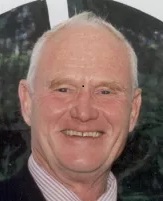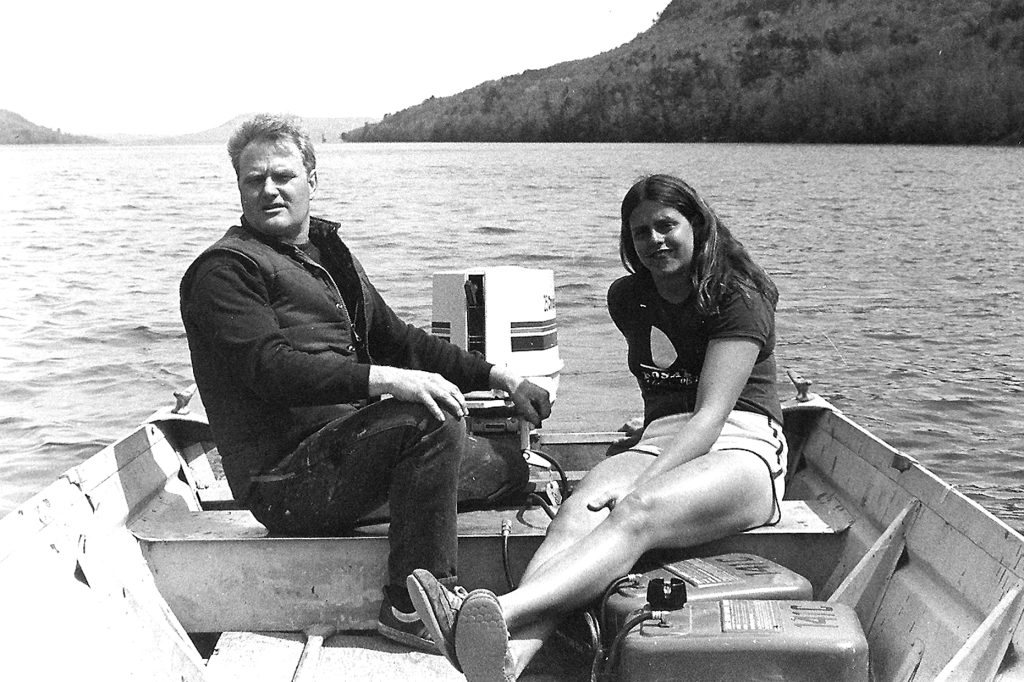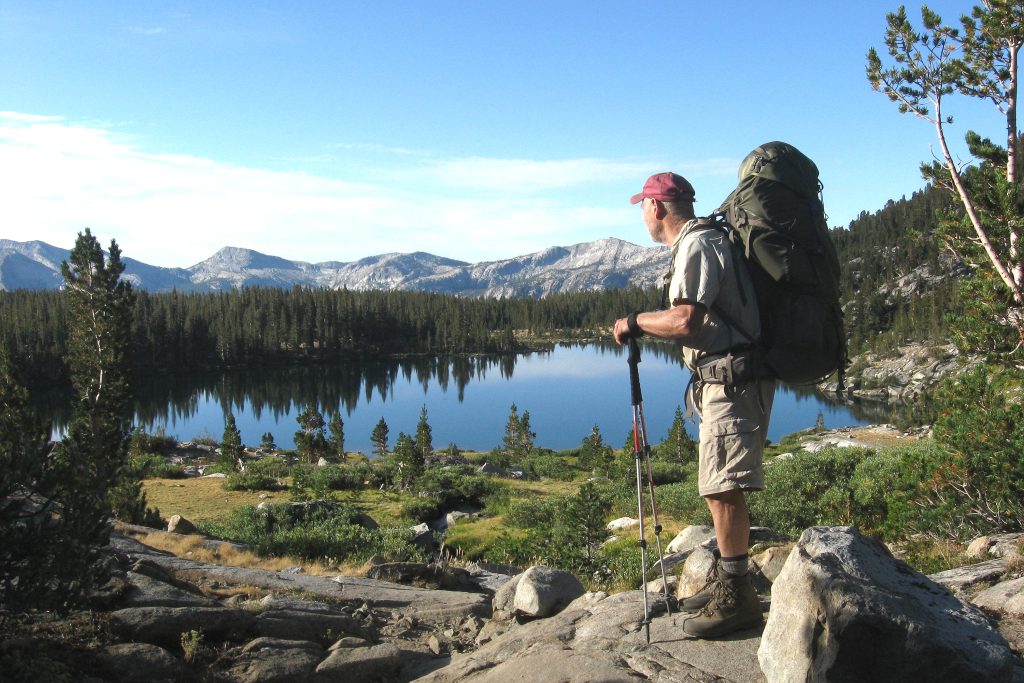Otsego Lake Steward Retires
Harman Reflects on 50+ Years as Head of SUNY Field Station

Photo provided
By ELIZABETH COOPER
COOPERSTOWN
It’s the end of an era. Dr. Willard “Bill” Harman, who has headed SUNY Oneonta’s Biological Field Station on the shores of Otsego Lake for 56 years, is retiring.
He is 86 years old and has dedicated most of his life to studying and protecting Glimmerglass, and teaching students to do the same for freshwater ecosystems across America and even in Europe.
Glimmerglass is beloved by area residents for its natural beauty and cool waters. It is also a tourism magnet and economic driver for many businesses. And it is the source of drinking water for the Village of Cooperstown. So, keeping the lake healthy is important on many levels and Harman and his team have earned the gratitude of many in the community for their tireless work.
“With support from his wonderful team at the Biological Field Station, Bill has been our community’s steadfast steward of Otsego Lake and the region’s watershed,” Jane Forbes Clark, president of the Clark Foundation, said in an e-mailed statement. “Whether working with fellow scientists, or engaging students, farmers, landowners, business persons, or government officials, he has established an ethos of collaboration that will be carried forward into the future by all who care about our environment and the vitality of our lakes, rivers, and streams.”
Cooperstown Mayor Ellen Tillapaugh echoed Clark’s thoughts.
“Everyone who loves and uses Otsego Lake owes an incredible debt to Bill Harman and the decades of scientific data amassed at the Biological Field Station, which has contributed to the quality of our environment,” she said.
Local organizations, colleagues and former students from Harman’s Lake Management Program all had praise for him. They spoke of his passion for his work and inspiring commitment to lake science.
Donna Vogler, president of the board of the Otsego County Conservation Association, said she has known Harman for at least 20 years and that his ability to connect the larger community with scientific facts about the lake made him a very effective environmental leader.
“It would be disingenuous to call him larger than life,” she said. “But he does have a way of stepping in and being recognized. He has been such a long and determined force. When he talks about some of the things that have gone on with the lake, he has watched it and you can feel he has that personal passion for it.”
Hanging Up His Hat
On a recent Monday, Harman sat in his office in the Field Station’s original building on the lake. Most of his books and photos were gone, but a bright orange jacket with HARMAN written across the back still hung just outside, alongside heavy waders and several pairs of galoshes.
He may be retiring, but he will still be a presence in the local environmental community.
“I am not going to forget about Otsego Lake,” he said with conviction.
Harman said he is looking forward to traveling and spending time with his wife, Barbara, but was glad to reminisce about how he and others built the Field Station and Lake Management graduate program into an internationally-known institute that has sent its students and researchers around the world. A part of SUNY Oneonta, the entities now boast 15 buildings with several lab classrooms, conference areas and other academic services.
Over the years the Field Station has acquired many acres of land near the lake. Rum Hill and the Thayer Farm on the east side of the lake were among the first, but now the field station either owns or has access to 2,600 acres of land for the study of ecosystems of all kinds. Researchers can study woods, wetlands, fields, ponds and shorelines.
Harman chuckled as he told tales of his years spent on the lake and of the many times he has used his scientific data to protect it. He also had fond recollections of working alongside other local environmentalists and lovers of the lake, from those with deep enough pockets to help fund needed projects to others who brought their professional skills and dedication to the cause.
“No one person can do it all by themselves,” he said.
How It All Began
Harman’s interest in water ecosystems began in childhood with a love of family and place.
He grew up in Geneva, on the shores of Seneca Lake. Both his parents were entomologists, and many of his extended family members were avid hunters and fishermen who also lived along the lake.
“I was interested in what was going on in the water,” he said. “I don’t even remember when I couldn’t swim.”
By age 8, Harman was selling snakes and other small creatures he caught near his home to a business that supplied specimens to schools for biology classes. He also began scuba diving in the late 1940s, so he knew every inch of his nearby lakeshore—both above and below the water.
Despite his deep interest in natural science, Harman did not do well in college at first. After just two semesters, he was asked to leave Hobart College “until I matured,” he recollected. He knew he loved diving, and the easiest and cheapest way to get experience was to join the Navy, so he did. There he was assigned to underwater explosive ordnance disposal and risked his life in seas all over the world.
After five years he returned to visit his beloved Seneca Lake, but found it horribly changed. The invasive aquatic plant milfoil had taken over and the underwater ecosystem he loved so much had been obliterated.
“From my point of view I had lost my home,” he said. “There was nothing to come back to. That was one of the big reasons to get back to higher education. To fix lakes.”
Starting the Field Station
Harman studied freshwater ecosystems first at Syracuse University’s forestry school and then at Cornell. Along the way he logged time at Woods Hole Oceanographic Institute and Harvard, but his heart remained in Central New York.
“I had done [specimen] collecting in Otsego Lake and decided that, frankly, this was the best part of the country I wanted to live in because of the kinds of natural resources it has,” he said. “Clean water, wooded hills and the biotas associated with that.”
When a job was advertised at SUNY Oneonta’s biology department he applied right away. When he didn’t immediately hear back he offered to teach a guest seminar in the hopes of dazzling the departmental leaders. His talk on freshwater snails did just that, and though they had already hired someone else for the position he had applied for, they offered Harman the opportunity to head up the newly-created entity that would become the field station. There wasn’t money in their budget, so they used funds from an equipment line, Harman said.
The year before, Stephen C. Clark had donated 365 acres of land adjacent to Leatherstocking Golf Course to SUNY so that students and faculty could research the local environment. A section of that property near the lake became the first base of operations for the BFS.

First Project
Before the 1970s, lake levels were not controlled as they are today. The dam at Mill Street was there, but it was rare that the wooden boards that managed flow were tinkered with. That meant snow melts and heavy rains could raise lake levels by several feet, submerging docks, flooding lakeside properties, and causing erosion. Lakeside residents were taking matters into their own hands, devising their own methods to stabilize the shorelines. Those attempts were causing their own problems, however, and the situation needed to be addressed at a higher level, Harman said.
The state needed to step in, but the two agencies that might have jurisdiction—the Department of Environmental Conservation and the Office of General Services—refused to take responsibility, Harman said.
“The DEC was responsible for everything above mean high water level and OGS had authority below it,” he said, but no one had ever determined what that level was. “They just threw things back and forth at each other and nothing was getting done.”
Harman decided the field station would start recording lake level data and he and the late Sam Smith, of Sam Smith’s Boatyard, combed the shoreline to try to determine what water level would work best for the environment and the community. The data and ideas were presented to the Village of Cooperstown, which needed to manage its water and sewage needs using lake water and the level they agreed upon remains in place today. Dr. Ted Peters, another Navy veteran who also ran Bassett Hospital’s research institute and served on Cooperstown’s Water and Sewer Board, was also very involved in the project, Harman said.
With lake levels stabilized and the high water mark determined, the state agencies could start doing their share, Harman said.
Glimmerglass State Park
Also in the 1970s, Glimmerglass State Park was growing in popularity and on a hot summer weekend could attract as many as 7,000 visitors, Harman said. Unfortunately, the park’s sewage system used a sand filtration system that emptied into Shadow Brook, the largest tributary into the lake. Though harmful bacteria was filtered out, everything else made its way into the lake and was rapidly drawn south toward the Susquehanna. Soon there was massive algae overgrowth, which had a severe impact on the lake’s delicate ecosystem.
“We could have lost all the cold water fish out of the lake,” Harman said, pointing to fisherman favorites, trout and Otsego bass.
Field station staff immediately began collecting data, which they showed to the state Parks and Recreation Department and the problem was fixed, Harman said.
Funding Conundrum
Those successful endeavors raised the field station’s profile in the community. People with an interest in the lake knew harmful runoff from septic systems and farms was still damaging the ecosystem and they wanted more to be done. Harman was happy to oblige, but such projects cost money.
A chance meeting on the lake brought the first significant donation. Harman and other staff had been diving at the north end of the lake to track algae growth when a storm forced them to quit for the day. On their way back to the station, they spotted an older gentleman standing on a point of land on the east side of Otsego and looking concerned. It was Willis Hadley, who owned the little man-made promontory. State laws had changed and he recognized that he would have to address some issues. Harman took some time that day to dive in and look over the situation underwater. The information he gathered was then given to the state and Hadley was able to maintain the property as it was.
Hadley was so grateful that he gave the BFS a large donation. It was their first and others, including the Clark Foundation, soon followed suit. Larger grants and donations were used not only to fund programs, but to assist farmers and other landowners to address harmful runoff issues on private property.
As the years went by, the Clark Foundation began giving to the field station annually.
“We basically owe everything to them,” Harman said.
A Brick through the Window
Harman’s projects weren’t popular with everyone. When the state proposed a large boat launch at Glimmerglass State Park, local environmental groups and others protested. Boaters and fishermen who didn’t have ready access to the lake, however, supported the plan.
Public meetings became contentious and Harman, who opposed the boat launch, was accused of being in the pocket of wealthy local residents who wanted the lake for themselves.
One night a brick was thrown through the window of Harman’s car as it was parked outside his home. Still, he pressed forward and brought his data to the state, which ultimately agreed that the lake would be unduly harmed by the launch. Local attorney Robert Poulson and preservation group Otsego 2000 then worked with Harman to ensure that there wouldn’t be any new launch site proposals.
Invasive Threats
Public battles aside, BFS students and staff are always collecting data about the lake. Everything from water levels to ice cover patterns to species populations and even microplastics is being studied and recorded.
This means that when a new threat to the local ecosystem arises, the field station knows right away and is able to develop a response.
So it was when milfoil, the same species that threatened Harman’s beloved Seneca Lake years ago, was spotted in Otsego Lake. It turned out there were insect species that grazed on the weed and found their quarry on their own. That time the response was simply to watch and wait.
But when a small fish called an alewife arrived, it posed a greater threat. Alewives voraciously eat zooplankton, but zooplankton helps control algae overgrowth. As the algae grew out of control, it affected the cold water trout and bass in a repeat of the impact of the Glimmerglass sewage decades before.
Harman and others at the field station knew of another fish that ate alewives, so they got funding—much of it from Lou Hager Jr.—to bring in as many as 80,000 walleyes a year for several years and the problem was solved. As luck would have it, walleyes are popular among fishermen, and had been native to Otsego Lake until they died out years ago, so it was a win-win.
“In the last five years we haven’t seen an alewife,” Harman said. “Because of that the Otsego bass are coming back strong and so are ciscos and a whole lot of minnows.”
A New Threat
Now the lake faces a triple threat.
In recent years invasive zebra and quagga mussels have found their way in, coating anything solid beneath the lake’s surface with their sharp shells. In addition, their consumption of certain types of algae has opened the way for a harmful species of algae, cyanobacteria.
Harman and his team have been at the forefront of the drive to prevent these harmful algae blooms, or HABS, from taking over. The fight is likely to be a hard one, however.
“There is no known way to get rid of mussels and cyanobacteria in a lake this size,” Harman said.
The fight isn’t over, though. Otsego Lake’s Watershed Supervisory Committee is working with the community to develop a Lake Management Plan to find ways to mitigate the problem. The field station is a partner in the endeavor.
Lake Management Program
One of the most important ways to protect freshwater resources into the future is more research.
Alongside the field station’s efforts to protect the lake has been its mission to educate students who want to do the same in other places.
“One reason I have not retired until now is that I have been trying to get students out there to manage lakes,” Harman said. “Getting them out there, hopefully doing what I have been trying to do.”
The Lake Management Program is the only one of its kind in the world. It admits nine students a year. Over the decades it has been operating, its graduates have obtained jobs across the nation and even in Europe.
One former student, Dave Andrews, called the program “unique.”
“You are immersed not only in the research but also interacting with the public,” he said. “That’s a part that is kind of missing from a lot of grad programs.”
But Harman himself was also part of the draw.
“Bill has that wisdom of age,” he said. “He exudes the confidence of someone who has been doing this a long time and the kind of person I wanted to learn from.”
Harman’s connections and reputation helped Andrews get his current job at the Upstate Freshwater Institute at Syracuse University, he said.
SUNY Oneonta’s Dean of Sciences Tracy Allen said the BFS would not be what it is without Harman’s continued leadership.
“We have somebody who literally has his life thread sewn through the Biological Field Station,” Allen said.
He pointed to Harman’s methodical collection of data about the lake as the foundation and the best source of plans for a healthy future and said Harman’s relationship with the local community was just as important.
“When Bill says what he is going to do, the community trusts that he is going to do just that,” Allen added.
In 2001, Harman was designated a Distinguished Professor of Service, the highest professional rank achievable in the SUNY system.

Next Stop, Nicaragua
Though Otsego County will always be home, Bill and Barbara Harman have always loved to see the natural wonders of the world. They have been to the Galapagos Islands, Iceland, Hawaii and New Zealand. They will soon head to Nicaragua.
“My wife is the one who has kept me moving,” he said.
Barbara Harman has had an interesting career of her own, working for non-governmental organizations creating schools for girls around the world.
Wherever they are, they will not be forgotten here at home.
Joe Homburger, a fellow environmentalist who has worked with Harman on many projects, wished him well.
“He is completely dedicated to the health and wellbeing of Otsego Lake…I didn’t think he would ever retire,” Homburger said. “More that he would just drift into the moss.”

